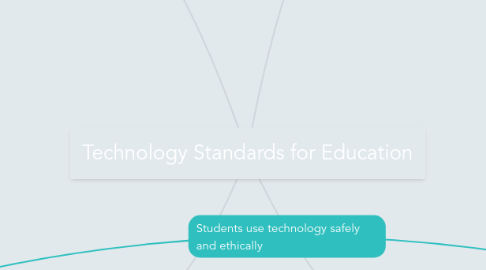
1. Learning and Technology Policy and Framework
1.1. Research and Innovation
1.1.1. Outcome a. Teachers, administrators, and education professionals stay current with educational technologies and research
1.2. Student-Centered Learning
1.2.1. Action: School Authorities establish a vision for curriculum that promotes technology based student-centered learning
1.2.2. Outcome c. Students develop and engage in digital citizenship through the ethical use of technology
1.2.3. Outcome d. Students demonstrate that they know how to use a variety of technological tools and resources
1.3. Professional Learning
1.3.1. Outcome c. Teachers, administrators and other educational professionals constantly engage in professional growth opportunities that are facilitated through the use of technology
2. ICT Program of Studies
2.1. Communicating, Inquiring, decision-making, and problem solving
2.1.1. C5: Students use technology to collaborate with each other
2.1.2. C7: Students will use technology to engage in research that will construct their own personal knowledge and meaning
2.2. Processes for Productivity
2.2.1. P6: Students use technology as a means for communicating and interacting with others
2.2.2. Students will use a variety of applications in the use of technology
2.3. Foundational Operations, Knowledge and Concepts
2.3.1. F3: Students will model a moral and ethical use of technology
3. ISTE Standards for Teachers
3.1. Digital Age Learning Experiences
3.1.1. b. Teachers provide technology-rich learning environments so that students can actively pursue their individual learning goals, assess their own progress, and manage their own learning
3.2. Model Digital Age Learning
3.2.1. b. Teachers collaborate with students, peers, parents and community members through the use of digital tools in order to support student learning
3.3. Engage in Professional Growth
3.3.1. Teachers continuously engage in professional development, model lifelong learning and are technological leaders in their schools
3.4. Model Digital Citizenship
3.4.1. a. Teachers advocate for, model and teach safe, ethical and legal use of technology
3.5. Facilitate Student Learning
3.5.1. d. Teachers model collaborative knowledge construction through engaging in learning with students and colleagues in physical and virtual environments
4. ISTE Standards for Students
4.1. The Empowered Learner
4.1.1. Students set their own learning goals and use technology to support, leverage and demonstrate their competency.
4.2. The Global Collaborator
4.2.1. Students use technology to collaborate with other students in order to broaden their perspectives and increase their learning
4.3. The Digital Citizen
4.3.1. b. Students act in a way that is safe, ethical, legal and positive while using technology, especially with online social interactions
4.4. The Innovative Designer
4.4.1. Students will use a variety of technological tools to identify and solve problems
4.5. The Knowledge Constructor
4.5.1. b. Students are able to evaluate the credibility and relevance of the information and research tools they use
